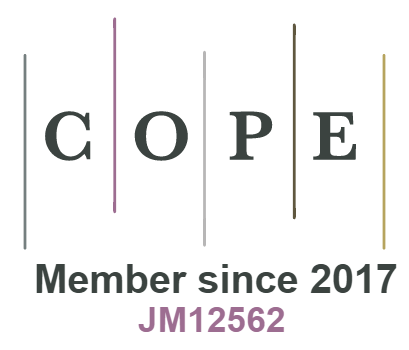Artificial Intelligence and Machine Learning in Waste Management and Recycling
DOI:
https://doi.org/10.18034/ei.v8i1.498Keywords:
Artificial Intelligence, Recycling, Waste Management, SustainabilityAbstract
Waste management is one of the biggest problems facing the world in any developed or developing country. An important aspect of waste management is that the waste bin in the open space is properly filled before the next cleaning process begins. This can eventually lead to various hazards such as dirt and bad odor in the area, which can lead to the spread of various diseases. Population growth has significantly reduced toilets through the waste management system. Laying garbage in public places creates a polluted environment. To eliminate or reduce waste and maintain good hygiene, it requires a waste-based waste management system. The need for proper waste management is not limited to proper collection and disposal of waste. It continues to be a waste disposal and recyclable level. Recycling is considered a major benefit because in addition to waste disposal, our reliance on immature materials is declining. By recycling metal, plastic and glass, the use of decomposing waste can extend beyond compost and manure. Metals can be reused and plastic can be mixed with clay filler, which can lead to soil compaction. After deep cleaning the glass construction material can be broken down and re-melted into new articles. This article is about machine learning and the use of artificial intelligence in the most viable areas and understanding the full need for human communication.
Downloads
References
Abdoli, S. (2009). RFID Application in Municipal Solid Waste Management System. International Journal of Environmental Research, 3(3), 447-454. https://ijer.ut.ac.ir/article_98.html
Awe, O., Mengistu, R., and Sreedhar, V. (2017). Smart trash net: Waste localization and classification. http://cs229.stanford.edu/proj2017/final-reports/5226723.pdf
Chowdhury, B. & Chowdhury, M. U. (2007). RFID based real-time smart waste management system. In Telecommunication Networks and Applications Conference, 2007. ATNAC 2007. Australasian, pages 175–180. IEEE. DOI: https://doi.org/10.1109/ATNAC.2007.4665232
Donepudi, P. K. (2018). Application of Artificial Intelligence in Automation Industry. Asian Journal of Applied Science and Engineering, 7(1), 7-20. http://doi.org/10.5281/zenodo.4146232
Donepudi, P. K. (2015). Crossing Point of Artificial Intelligence in Cybersecurity. American Journal of Trade and Policy, 2(3), 121-128. https://doi.org/10.18034/ajtp.v2i3.493 DOI: https://doi.org/10.18034/ajtp.v2i3.493
Donepudi, P. K. (2017). Machine Learning and Artificial Intelligence in Banking. Engineering International, 5(2), 83-86. https://doi.org/10.18034/ei.v5i2.490 DOI: https://doi.org/10.18034/ei.v5i2.490
Islam, M. S., Arebey, M., Hannan, M., and Basri, H. (2012). Overview for solid waste bin monitoring and collection system. In Innovation Management and Technology Research (ICIMTR), 2012 International Conference on, pages 258–262. IEEE DOI: https://doi.org/10.1109/ICIMTR.2012.6236399
Kite-Powell, J. (2017, April 12). This Recycling Robot Uses Artificial Intelligence To Sort Your Recyclables. Retrieved November 07, 2020, from https://www.forbes.com/sites/jenniferhicks/2017/04/04/this-recycling-robot-uses-artificial-intelligence-to-sort-your-recyclables/
Parlikad, A. K. & McFarlane, D. (2007). RFID-based product information in end-of-life decision making. Control Engineering Practice, 15(11), 1348–1363. https://doi.org/10.1016/j.conengprac.2006.08.008 DOI: https://doi.org/10.1016/j.conengprac.2006.08.008
Pyzyk, K. (2019, December 11). Robots move in. Retrieved November 08, 2020, from https://www.wastedive.com/news/recycling-labor-mrf-robots-move-in/568554/
Sinha, A. & Couderc, P. (2012). Using OWL Ontologies for Selective Waste Sorting and Recycling. OWLED-2012, May 2012, Heraklion, Crete, Greece. https://hal.inria.fr/hal-00924427
Thomas, V. M. (2008). Environmental implications of RFID. In Electronics and the Environment, 2008. ISEE 2008. IEEE International Symposium on, pages 1–5. IEEE. DOI: https://doi.org/10.1109/ISEE.2008.4562916
--0--
Downloads
Published
Issue
Section
License
Engineering International is an Open Access journal. Authors who publish with this journal agree to the following terms:
- Authors retain copyright and grant the journal the right of first publication with the work simultaneously licensed under a CC BY-NC 4.0 International License that allows others to share the work with an acknowledgment of the work's authorship and initial publication in this journal.
- Authors are able to enter into separate, additional contractual arrangements for the non-exclusive distribution of the journal's published version of their work (e.g., post it to an institutional repository or publish it in a book), with an acknowledgment of its initial publication in this journal. We require authors to inform us of any instances of re-publication.









